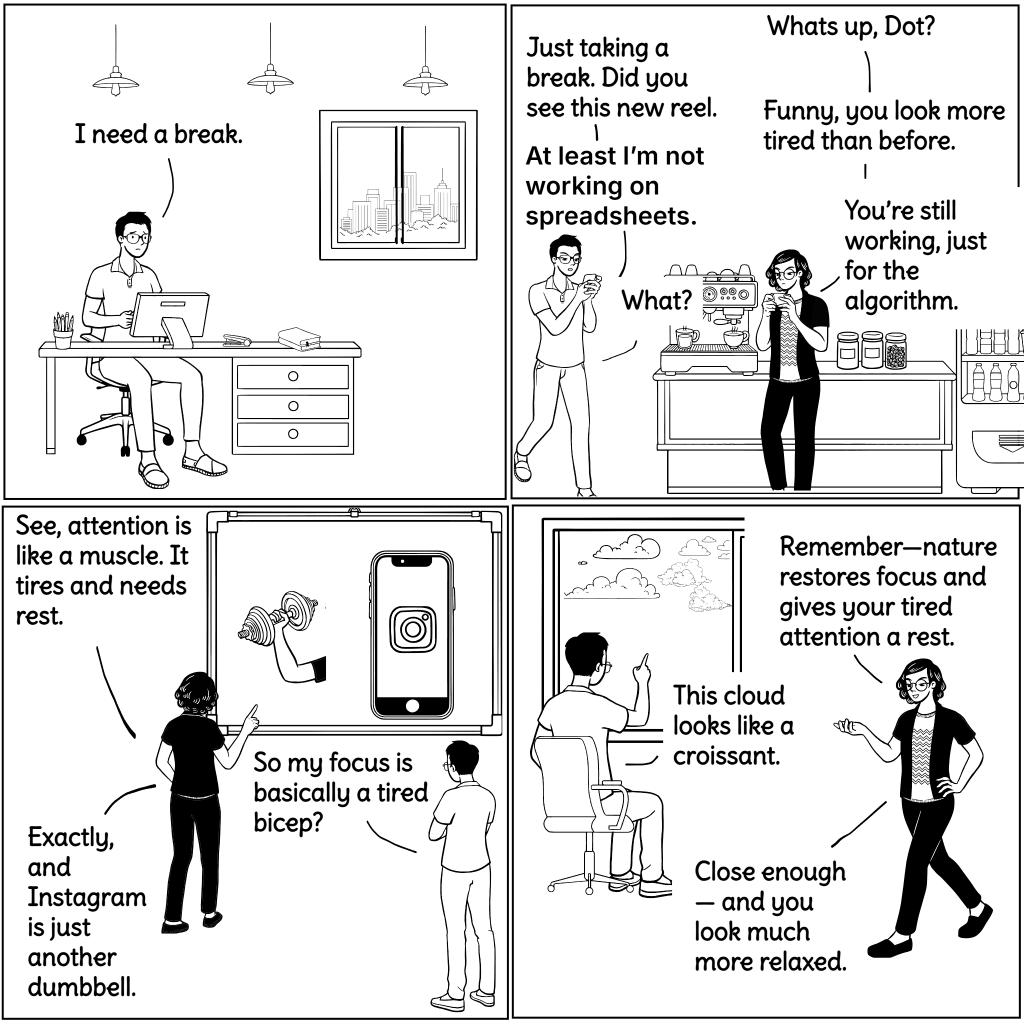When your focus starts to fade and you need a break, what's your go-to move?
If you're like most people, you pick up your phone.
A staggering 92% of professionals admit to multitasking with their phones during meetings, and that habit spills over into our break times.
You reward an hour of intense work with a break of intense "phone work"—scrolling, liking, and consuming an endless feed.
You call it "taking a break." But then you return to your desks feeling just as drained, foggy, and distracted as before.
Or you spend a 'relaxing' weekend scrolling through Instagram and binge-watching Netflix, but still start Monday exhausted.
Here's the uncomfortable truth: Your breaks aren't working because they aren't really breaks. They are a different kind of work.
It's time to learn the difference between low-quality distraction and high-quality recovery.

Your ability to focus—what psychologists call directed attention—is a finite resource. Like a muscle, it gets fatigued with use. When it's tired, you make more mistakes, your thinking gets slower, and your willpower plummets.
The mistake we make is trying to rest this fatigued muscle with an activity that also requires directed attention. Scrolling through a social media feed, reading news headlines, or replying to a message all consume the very resource you're trying to restore.
This is where Attention Restoration Theory (ART), developed by environmental psychologists Rachel and Stephen Kaplan, helps us win the game.
Their research found that we can rapidly replenish our directed attention by engaging in what they call "soft fascination." This is a state of effortless attention captured by environments with natural, low-stimulation patterns—like watching clouds drift, looking at trees sway in the wind, or observing the flame of a candle.
This type of recovery is not empty time, it is an active biological process. Practices like Non-Sleep Deep Rest (NSDR) take this even further, using guided protocols to put your brain into a state that accelerates the replenishment of the neurological resources needed for focus and learning.
Imagine taking a 10-minute break and returning to your work feeling calmer, clearer, and more capable. Imagine that break being the most productive part of your hour, because it will multiply the effectiveness of the next 50 minutes.
This is easy to achieve once you start treating recovery as a skill.
High-performance professionals, from athletes to surgeons to musicians, not only work hard, but they also recover strategically. They understand that progress isn't made during the performance, but during the period of intelligent rest that follows.
"I think sometimes the best training is to rest."
- Cristiano Ronaldo
"Every now and then go away, have a little relaxation, for when you come back to your work your judgment will be surer."
- Leonardo da Vinci
By building moments of true, high-quality recovery into your day, you're not slacking off. You are engaging in the essential maintenance required for elite-level knowledge work. You are making your brain more resilient, your focus sharper, and your best work more accessible.
This week, your challenge is to swap one of your daily phone breaks with the following recovery practice.
Just one of these, once a day, is enough to begin breaking the cycle of counterfeit rest. You'll be amazed at how much energy you can reclaim when you learn to truly rest.